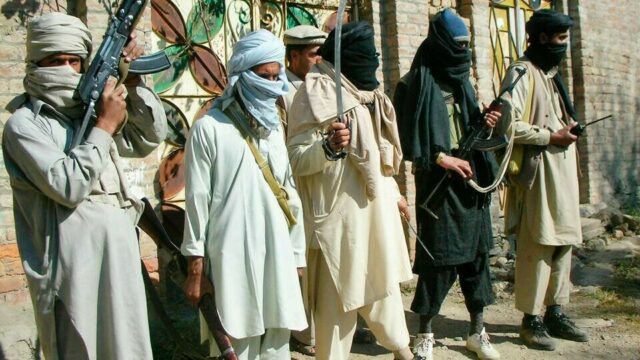
The Pakistani Taliban’s Reemergence in Swat
Publication: Terrorism Monitor Volume: 21 Issue: 3
By:

Since late 2022, the Tehreek-i-Taliban Pakistan (TTP), also known as the “Pakistani Taliban,”—an alliance of jihadist networks that have fought the Pakistani state since 2007—has been regrouping. This is especially so in the Khyber Pakhtunkhwa province on the border of Afghanistan. For example, there was an attack on October 10, one day after the tenth anniversary of the shooting of Nobel Laureate Malala Yousafzai. In this incident, unidentified armed men opened fire on a school van in Swat district, killing the driver and injuring students (Dawn, October 10). The attack occurred following the resurgence of the TTP militants in Swat, which indicates that the TTP is attempting to make its presence felt in Swat and elsewhere in the province.
Shortly after this attack, the TTP stepped-up its attacks against Pakistani law enforcement, killing two Inter-Services Intelligence (ISI) officers (Dawn, January 7). One of the deadliest attacks by the TTP occurred in Bannu, a town in Khyber Pakhtunkhwa province, where TTP militants captured several Counter Terrorism Department (CTD) officers. By the end of the recovery operation that followed, 25 TTP fighters were killed, as were two commandos of the Pakistani army (Dawn, December 2).
The TTP’s Emergence and Revival in Swat
The TTP’s siege of Lal Masjid in 2007 marked the beginning of several years of bloodshed in Pakistan (Dawn, July 9, 2017). However, the military’s subsequent Operation Zarb-i-Azb weakened the TTP network in FATA (Federally Administered Tribal Areas) and pushed TTP militants into Afghanistan. This weakened the group and reduced the number of its attacks (Daily Times, November 14, 2016). Following the Afghan Taliban’s takeover of Kabul in August 2021, their Pakistani counterparts in the TTP began regrouping. This was contrary to the expectations of Pakistani policy-makers, who had incorrectly assumed the Afghan Taliban would cooperate with Pakistan’s government as an ally.
Of major towns in the region, Swat has the longest history with TTP’s militants. Under Mullah Fazlulah’s leadership, the TTP had originally challenged the state for control of the Swat valley as early as 2007 (Express Tribune, November 7, 2013). The Pakistani military feared that the TPP might try to capture the capital of the country, Islamabad, and therefore launched Operation Rah-e-Rast to drive out the TTP militants in Swat. The military was ultimately able to rid the Swat valley of TTP militants, for a time (Dawn, May 2009).
The TTP’s Re-emergence in Swat
TTP militants are now re-emerging in the mountainous areas of Swat. Like in the past, they are conducting improvised explosive device (IED) attacks and targeted killings in Swat valley. This has resulted in a backlash from the civilian population, however, with hundreds of people taking to the streets to protest against the rise of militancy throughout Khyber Pakhtunkhwa province (Dawn, September 16; Dawn, October 12). Among other controversial incidents, in one Swat attack, a peace committee member and his police guards were killed in a remote-controlled bomb blast, which the TTP claimed responsibility for (Dawn, September 13).
Meanwhile, the Pakistani state has pressured the Afghan Taliban to bring TTP militants to the negotiating table. Although the Afghan Taliban did so, and negotiations were attempted, they were not a success. The TTP did not concur with the Pakistani civil and military leadership’s demand to abandon their position on jihad, nor did the Pakistani delegation concur with several of the TTP’s requirements (Terrorism Monitor, October 21). The TTP has also been using Afghan soil to carry out attacks inside Pakistan and against the Pakistani security forces at the Pakistan-Afghanistan border. Unsurprisingly, this has become a source of tension between Afghanistan and Pakistan. On the other side, Pakistani security forces carried out attacks against the TTP’s safe haven inside Afghanistan, which drew protests from Kabul (Gandhara, April 20).
Conclusion
Over the years, the TTP has become a greater threat to the Pakistani state and has been able to challenge its control over the border with Afghanistan and the country more broadly. Currently, however, the TTP is bolder than in the past, due to the assistance they have received from their Afghan counterparts (Dawn, September 6). Pakistan seems to be unable to control the threat; a good case in point is the resurgence of the TTP elements in Swat district, which notably does not share a border with Afghanistan. It is not inconceivable that the TTP will continue to make inroads throughout the country, even as far as Islamabad. Therefore, the Pakistani state must act promptly to crack down on the TTP before the militant group becomes too large to contain (Dawn, July 7).



